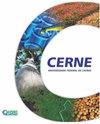Leaflet phenotypic plasticity in three woody species in two strata of a gallery forest
IF 0.7
4区 农林科学
Q3 FORESTRY
引用次数: 1
Abstract
Background: Along the vertical canopy profile, natural light availability is variable and may induce leaves morphophysiological changes due to phenotypic plasticity. Morphological changes in juvenile and adult leaflet of compound leaves of plant species is still poorly understood, including in woody species of gallery forests. The present study evaluated the leaflet morphophysiological characteristics and plasticity index of three woody species in canopy and understory leaves in a gallery forest. Results: All morphophysiological characteristics varied within species (Myracrodruon urundeuva Allemão, Copaifera langsdorffii Desf. and Tapirira guianensis Aubl.). The leaflets of canopy trees showed significantly higher values of petiole length (PL) and diameter (PD), leaflet thickness (fresh - FT and dry -DT), specific leaf mass (SLM), in relation to understory leaflets. On the other hand, relative water content (RWC) did not change between adult trees and saplings, except for T. guianensis. The plasticity index of leaflet characteristics varied significantly within species. Plasticity index of three morphophysiological characteristics (PL, PD and DT) varied between species. PL and PD had the highest plasticity index values across species, whereas RWC had the lowest plasticity. Conclusion: Plasticity index of the tree species associates these leaflet morphophysiological traits (PL, PD and DT) with variations in the physical environment between strata of a gallery forest. forest fragment. The phenotypic plasticity of morphological variables associated with petiole traits (length and diameter) and dry leaflet thickness varies between species.廊道林两层三种木本树种小叶表型的可塑性
背景:在垂直冠层剖面上,自然光利用率是可变的,可能由于表型可塑性而引起叶片形态生理变化。植物幼体和成体复叶小叶的形态变化尚不清楚,包括廊道林中木本植物。对廊道林冠层和林下3种木本植物的小叶形态生理特征和可塑性指数进行了研究。结果:不同种属(Myracrodruon urundeuva allem o, Copaifera langsdorffii Desf)的形态生理特征各不相同。贵州貘(Tapirira guianensis Aubl.)。与林下小叶相比,冠层小叶的叶柄长度(PL)和直径(PD)、小叶厚度(鲜叶厚度和干叶厚度)和比叶质量(SLM)均显著高于林下小叶。相对含水量(RWC)在成树和幼树间无明显变化,但贵阳树除外。小叶特征的可塑性指数在不同种间差异显著。三种形态生理特征(PL、PD和DT)的可塑性指数在不同物种间存在差异。PL和PD的可塑性指数最高,RWC的可塑性指数最低。结论:该树种的可塑性指数与廊道林各层间物理环境的变化有关。森林片段。叶柄长度、直径和干小叶厚度等形态变量的表型可塑性在不同物种间存在差异。
本文章由计算机程序翻译,如有差异,请以英文原文为准。
求助全文
约1分钟内获得全文
求助全文
来源期刊

Cerne
农林科学-林学
CiteScore
1.60
自引率
0.00%
发文量
2
审稿时长
6-12 weeks
期刊介绍:
Cerne is a journal edited by the Federal University of Lavras, Minas Gerais state, Brazil, which quarterly publishes original articles that represent relevant contribution to Forestry Science development (Forest ecology, Forest Management, Silviculture, Technology of Forest Products).
 求助内容:
求助内容: 应助结果提醒方式:
应助结果提醒方式:


